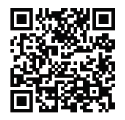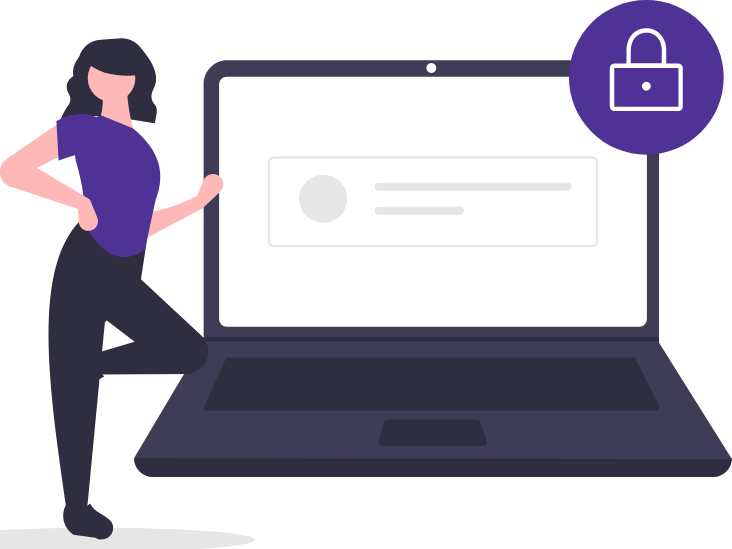What is fiber internet?
If you’re here on the Quantum Fiber website, you’ve clearly heard a thing or two about fiber. You may have even heard that it’s better or faster than other kinds of internet services. We certainly like to think so! But what exactly is fiber internet? And how does it work to bring faster, more reliable internet? Read on and learn more.
Fiber-optic internet, commonly called “fiber,” is a broadband connection that can now reach speeds all the way up to 10 Gigabits per second (Gbps) in some areas! Many connections run at speeds of up to 500 or 940 Megabits per second (Mbps), which most would agree is plenty fast.
How does fiber-optic internet work?
In a nutshell, fiber internet transmits data in the form of light rather than electricity. There are many (boring) pieces that make up this advanced technology, but the two coolest parts are the fiber-optic cables and what’s called “the last mile.”
Fiber-optic cables
The backbone of the fiber network is fiber-optic cables, which run above ground, underground, and undersea. At the core of these cables are bundles of thousands of tiny glass strands (called optical fibers), each of which is as thin as a human hair. Pulses of light are used to transmit data and move incredibly fast through these fibers. The result is fiber-optic cables sending data at nearly 125,000 miles per second, or roughly 70% of the speed of light! Amazing, right? Fiber-optic cables are also resistant to weather and electrical interference, which helps minimize outages.
The last mile
Once these super-fast pulses of light reach their destination, they are changed into electrical output that your devices can understand. This important work is done by a special piece of equipment called the optical network terminal. Once the signal is transformed, it’s sent through an Ethernet connection and/or WiFi signal to the your devices. The final stretch between the main fiber network line and the end user is referred to as “the last mile” (though it’s often much shorter than a mile).
“Pure fiber” refers to fiber connections that run all the way to a home, business, or desktop computer. As an alternative, copper cables are often used to bridge the short gap from a network terminal at the curb to a housing block, campus, or residential building.
A brief history of fiber optics
Though some people think of fiber as a relatively new technology, it’s surprisingly retro! Fiber internet actually dates back to the 1970s. For the first decade or more, it was used in telecommunications “behind the scenes” without much public awareness. Then, in 1988, fiber-optic cables were first buried under the ocean, connecting the U.S. to Europe. More lines were added over the years, so today a massive network of fiber-optic cables stretches around the globe. Some would say fiber-optic networks, with their ultra high-speed capabilities, are what made the Information Age possible (and let’s just say we agree). A couple of decades ago, fiber-optic lines started to replace more of the older copper lines that make up the backbone of nationwide internet networks. Fast forward to today, when it’s more affordable to install fiber lines direct to neighborhoods, homes, and businesses. Now fiber internet is rapidly becoming the new standard.
How is fiber different from other types of internet?
The biggest difference is that fiber doesn’t rely on electric current. Internet technologies have evolved dramatically in other ways over time. Here is a brief synopsis of the other major types of connections that are used, and how they work:
Dial-up internet
Younger readers have likely never experienced a dial-up connection, which ran on existing copper telephone lines. Dial-up used the audible frequency of the landline, so you would hear funny booping and beeping when it connected. Because the internet and telephone shared the same line, you couldn’t use them both at the same time. The average speed of a dial-up connection was about 56 Kbps (that’s about 0.05 Mbps). Imagine!
DSL internet
DSL (digital subscriber line) internet also uses telephone lines to transmit data. But DSL uses inaudible frequencies, so it doesn’t compete with phone service. Most DSL services top out at about 140 Mbps for downloading and about 20 Mbps for uploading.
Cable internet
Cable internet uses the same line that cable TV service runs on, known as “coaxial cable." Speeds for cable internet can vary widely, with some services reaching up to 900 Mbps for downloading and 50 Mbps for uploading.
What are the benefits of fiber internet?
The good news is, you don’t have to know how fiber internet works to enjoy all the great benefits it offers. Fiber internet is a great choice for high-bandwidth households, which means there are multiple people wanting to connect multiple devices at once. It allows high-definition streaming, online gaming, backing up data, videoconferencing, and more to occur all at the same time without causing buffering or slowdowns.
Fiber is mega fast
A fiber-connected home can deliver a consistent signal across all connected systems and devices, from home security to smart thermostats, ovens, refrigerators, and other appliances.
Here are some fun examples of how long it would take, on average, to download a large media file (6.5 GB) using different internet types at different download speeds:
- Dial-up at 56 Kbps 11 days
- DSL at 10 Mbps 1.5 hours
- Cable at 100 Mbps 9 minutes
- Fiber at 940 Mbps 1 minute
- Fiber at 8 Gbps 7.2 seconds
Based on data from GIGA Calculator
What are multi-gig speeds?
When you see numbers like 8 Gigabits per second in the section above, we're talking about multi-gig speeds. These super-high bandwidth plans come with a whole world of new possibilities, but also require some specialized hardware. Check out the download times in the table below—at the U.S. average internet speed of 192 Mbps*, compared to Quantum Fiber Gigabit speeds of up to 3 Gbps and up to 8 Gbps. Remember that real-world download times always vary based on network and hardware conditions inside the home or business. But give or take a few seconds, these are some incredible speeds!
Downloaded media type |
192 Mbps* |
3 Gbps symmetrical |
8 Gbps symmetrical |
100 GB video game |
1 hour 9 min |
4 min 26 sec |
1 min 40 sec |
1 hr 4k video (20-22 GB) |
15 min 16 sec |
58 sec |
22 sec |
1 hr 8k video (36-40 GB) |
27 min 46 sec |
1 min 46 sec |
40 sec |
* Based on the weighted average advertised U.S. data connection download speed of participating Internet Service Providers of 193.9 Mbps. FCC Measuring Fixed Broadband Eleventh Report, December 2021.
Fiber is ultra reliable
Fiber-optic cables are not likely to lose part of the internet signal over great distances. This also means fiber lines have super low latency, which is the time it takes a signal to travel to another computer or server and back to you. All of this adds up to an incredibly consistent connection.
How's that for fiber knowledge? We hope you’ve learned a few interesting facts about fiber so you can impress your friends and coworkers. Fiber-optics: the amazing technology that literally runs on light. Fiber is the future of the internet (if we do say so ourselves).
This content is provided for informational purposes only and may require additional research and substantiation by the end user. In addition, the information is provided “as is” without any warranty or condition of any kind, either express or implied. Use of this information is at the end user’s own risk. All third-party company and product or service names referenced in this article are for identification purposes only and do not imply endorsement or affiliation with Quantum Fiber. This document represents Quantum Fiber’s products and offerings as of the date of issue. Services not available everywhere. Quantum Fiber may change or cancel products and services or substitute similar products and services at its sole discretion without notice. ©2024 Q Fiber, LLC. All Rights Reserved. Quantum, Quantum Fiber and Quantum Fiber Internet are trademarks of Quantum Wireless LLC and used under license to Q Fiber, LLC.
Was this information helpful?








